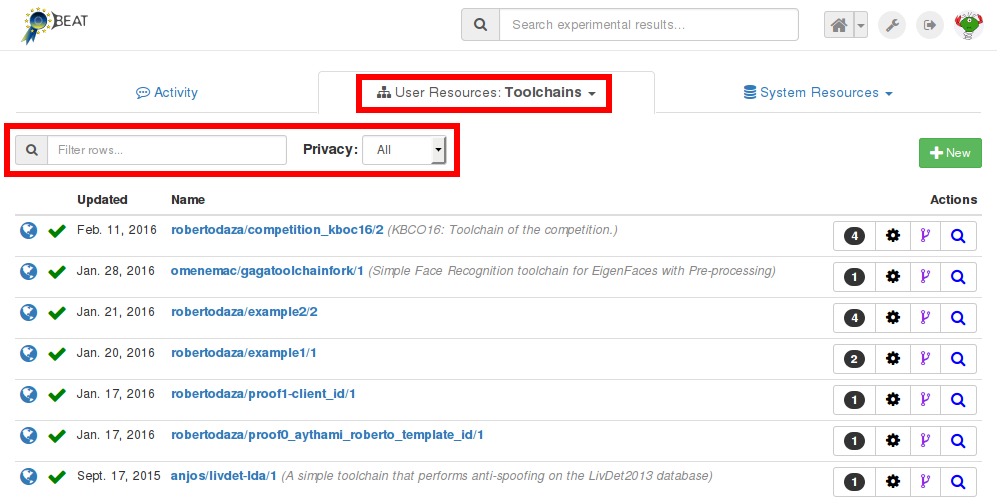6. Toolchains¶
Toolchains are the backbone of experiments within the BEAT platform. They determine the data flow for experiments in the BEAT platform. For more information about toolchains see the “Toolchains” section of “Getting Started with BEAT” in BEAT documentation.
6.1. The Toolchains tab¶
To open the Toolchains tab, you have to click on the tab ‘User Resources’ from your homepage and select ‘Toolchains’. On this window, you can search a toolchain by typing a toolchain name in the ‘Filter rows’ search bar.
The image below shows the ‘Toolchains’ tab and the ‘Filter rows’ search bar (red rectangles):

Some buttons are available for each toolchain:
New experiment: to create a new experiment based on the toolchain.
Search experiments: to show the experiments performed on this toolchain
Fork: to fork this toolchain (see section :ref:’modifytoolchain’). When you fork a toolchain, you have to give it a new name.
And some more buttons if you own the toolchain:
New version: to create a new version of this toolchain. The toolchain will keep the same name and the version number will be incremented when you click on this button.
Share: to share this toolchain with any number of parties you wish.
Edit: to modify this toolchain (only available if this toolchain has not been used in an experiment).
Delete: to delete this toolchain (only available if this toolchain has not been used in an experiment).